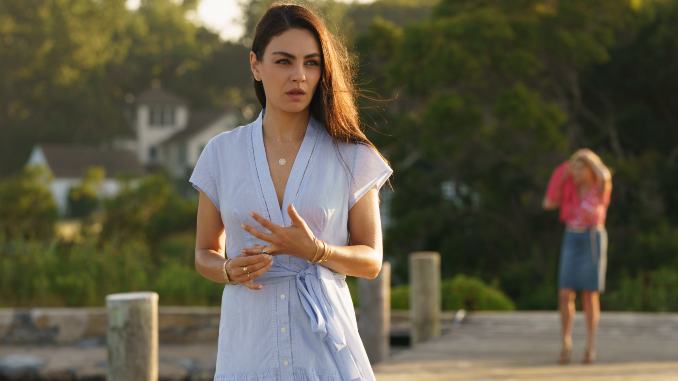Luckily, You Can Skip Luckiest Girl Alive

Sometimes when watching a movie, you can almost feel the internal struggle going on as the producers, writers and stars wrestle with exactly what kind of movie they are making.
Is Luckiest Girl Alive a dark satire? Is it a glorified Lifetime movie? Is it camp? Is it a mystery? Is its central message one of female empowerment? Could it have been the pilot for a WB series 20 years ago? The answer, I’m afraid, is all of the above.
Based on the 2015 novel of the same name by Jessica Knoll, Luckiest Girl Alive follows Ani Fanelli (Mila Kunis), a writer at a glossy magazine called The Women’s Bible (think Cosmopolitan) where, by her own admission, she put her journalism degree to work by writing in-depth articles about orgasms and blowjobs. “Apparently men’s pleasure is of global importance,” she says. She has a glamorous boss LoLo Vincent (Jennifer Beals, who doesn’t get nearly enough screen time. You can never have too much Jennifer Beals) and dreams of being an editor for The New York Times Magazine. (You know the movie is set in 2015 because people still care about print media). She’s also got a giant rock on her finger thanks to her swanky fiancé Luke Harrison (Finn Wittrock) who “played D1 lacrosse at Colgate, kite surfs on Nantucket and skis in Vail.”
But nothing in Ani’s life is as it seems. She once was TifAni FaNelli (Chiara Aurelia plays the young Ani), a shy high school student just trying to fit in among her rich classmates. In the present-day, Ani’s appearance and persona are meticulously cultivated. She carefully cuts her pizza, eating just a few dainty bites only to scarf down full slices when Finn briefly leaves the table. She’s got a biting inner narration full of prickly barbs. “Petite is what they call short fat girls. I should know. I used to be one,” she says. Her outer diatribes aren’t so great either. “MFA programs are just for white girls who can’t get paid to write,” she tells Finn.
-

-

-

-

-

-

-

-

-

-

-

-

-

-

-

-

-

-

-

-

-

-

-

-

-

-

-

-

-

-

-

-

-

-

-

-

-

-

-

-








































